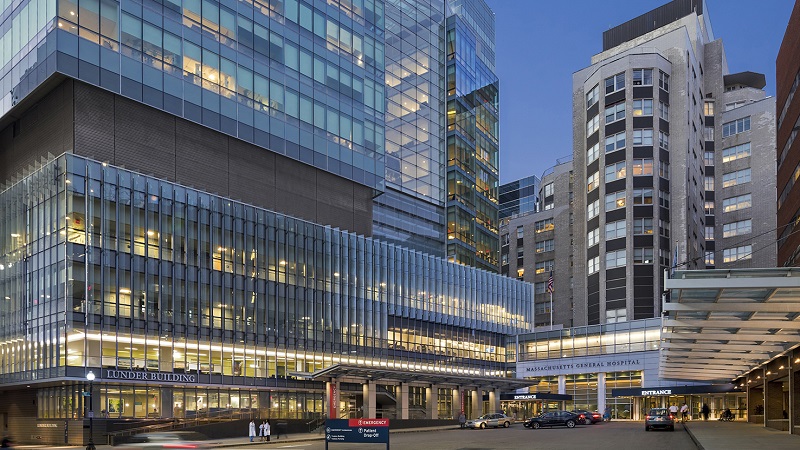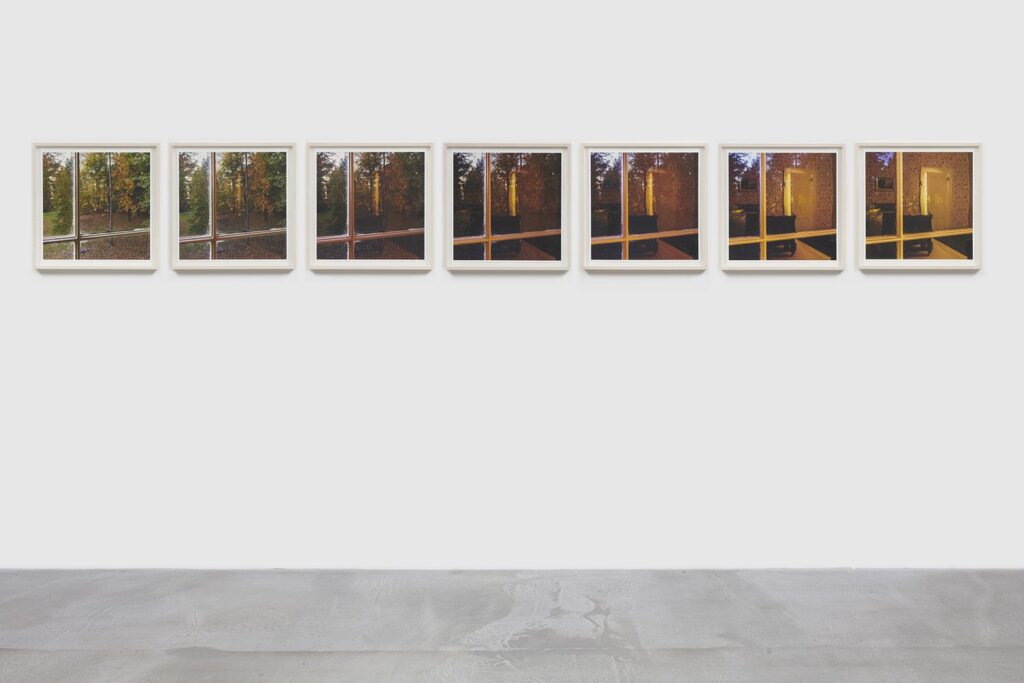
Light in Hospital Architecture
Mia Antonini
Massachusetts General Hospital, Boston, MA (Credit: MGH)
“Architecture is the play, knowing, correct, and magnificent of form in light.”
Le Corbusier
Light is a fundamental aspect of architecture. It creates an atmosphere and helps with navigation. In hospitals, this is vital for patient experience and permits the carrying out of necessary functions. Light in hospitals can take a variety of different forms, from surgical overhead lights, to stained glass art, to daylight in patient rooms. Light can be creatively constructed and designed in medical spaces to ease patient and family stress, support patient recovery, and allow for medical staff to practice safely. Without light, hospitals simply cannot operate normally.
But hospital architecture can also be inherently political. When hospitals shut down and their buildings are no longer left as accessible health spaces, people are unable to receive the healthcare they need. It’s a crisis—if hospitals are shut down and those left behind do not have the physical design capacity for enough patients, people are left without adequate support. With the Health Equity Assessment Act, signed by New York State Governor Kathy Hochul, there is hope that effect on local communities will be taken into vital account when considering hospital closures.
In a place of anxiety and fear like a hospital, light can create a sense of warmth and comfort. Through brightening hallways and entryways, light allows patients and their loved ones to more easily navigate through hospitals. When patients are able to determine the amount of light in their space, through blinds or curtains, they are offered a valuable autonomy, which Bryan Lawson of the University of Sheffield calls the intersection of “comfort and control.”
Hospital architecture must balance many goals: it must be easy to sanitize, comforting for patients, and able to adapt to community needs, as seen in the case of COVID-19. Adaptability is clear in light architecture. In conversation with my interview source, she shared a story of creativity where a light source was needed for a patient room and a skylight was resourcefully utilized to achieve this goal; this is the intersection of hospitality, medicine, architecture and light.

The dynamic between artificial and natural light can be seen in Spencer Finch’s The Outer—from the Inner (Emily Dickinson’s Bedroom, dusk), a series of seven photographs produced in 2018 and currently on display at the Wellin Museum’s Dialogue Across Disciplines exhibition. In this series, Finch captures where natural light is needed to illuminate the outside world while artificial light does the same for the inside world—both styles of light create a sense of warmth and allowing for navigation. It’s clear how one light form picks up where the other leaves off—when the natural light of the sun dims, artificial light takes over as the primary light source. In hospital architecture, learning how to use both of these light forms is crucial to creating a holistic and functional experience.
Light is a special architectural element as it is both able to illuminate features and can be appreciated as its own form. It’s flexible as well—it can be natural or artificial. It is a necessity in nearly all architectural spaces, and in hospital settings, plays integral roles in their supporting medical processes. But hospitals must be supported politically in order to operate and support patients; medical access is a right, and designing hospitals with optimal capacity and supportive atmospheres, as well as evaluating the local impact of hospital closures, is necessary for ensuring community health.
Bibliography
Aripin, S. “Healing Architecture: Daylight in Hospital Design.” Conference on Sustainable Building South East Asia, November 2007. Digital file.
Aripin, Srazali. “Healing Architecture: A Study on the Physical Aspects of Healing Environment in Hospital Design.” N.d. Digital file.
Brand, David. “City Watch: Should NYC Land Use Decisions Consider Hospital Capacity?” CityLimits. Last modified January 4, 2022. Accessed May 9, 2023. https://citylimits.org/2022/01/04/city-watch-should-nyc-land-use-decisions-consider-hospital-capacity/.
Castillo, Amanda Del. “Backup Generators Fail at SJ Hospital during Blackouts, Leaving Workers Scrambling for Hours.” ABC7 News. Last modified September 8, 2022. Accessed May 9, 2023. https://abc7news.com/santa-clara-valley-medical-center-blackout-san-jose-power-outages-bay-area-heat-wave-back-generators/12211056/.
“Crafting Architectural Space:.” In Crafting Architectural Space:, 175-227. Venice Variations. N.p.: UCL Press, 2018. https://doi.org/10.2307/j.ctvqhspn.9.
Cuttle, Christopher. Lighting by Design. 2nd ed. Butterworth-Heinemann, 2008. Google Books.
Dalke, Hilary, Jenny Little, Elga Niemann, Nilgun Camgoz, Guillaume Steadman, Sarah Hill, and Laura Stott. “Colour and Lighting in Hospital Design.” Optics and Laser Technology 38, nos. 4-6 (June 2006): 343-65. https://www.sciencedirect.com/science/article/pii/S0030399205001283.
Descottes, Hervé, and Cecilia E. Ramos. Architectural Lighting: Designing with Light and Space. Princeton Architectural Press, 2011. Google Books.
Evelly, Jeanmarie. “New Law Will Require NY Hospitals to Assess Community Impact of Closures, Mergers.” CityLimits. Last modified December 28, 2021. Accessed May 9, 2023. https://citylimits.org/2021/12/28/new-law-will-require-ny-hospitals-to-assess-community-impact-of-closures-mergers/.
Gow, Catherine, and Jennifer Kenson. “COVID-19’s Ongoing Impact on Healthcare Design.” Healthcare Design. Last modified June 10, 2022. Accessed April 1, 2023. https://healthcaredesignmagazine.com/trends/architecture/impact-of-covid-19-pandemic-on-healthcare-design/.
Hebbert, Michael. “A City in Good Shape: Town Planning and Public Health.” The Town Planning Review 70, no. 4 (October 1999): 433-53. https://www.jstor.org/stable/40111784.
Heller, Cheryl. “How the Architecture of Hospitals Affects Health Outcomes.” Harvard Business Review. Last modified October 15, 2018. Accessed May 9, 2023. https://hbr.org/2018/10/how-the-architecture-of-hospitals-affects-health-outcomes.
———. “How the Architecture of Hospitals Affects Health Outcomes.” Harvard Business Review. Last modified October 15, 2018. Accessed April 1, 2023. https://hbr.org/2018/10/how-the-architecture-of-hospitals-affects-health-outcomes.
“Hospital Architecture.” The British Medical Journal 2, no. 452 (August 28, 1869): 241-42. https://www.jstor.org/stable/25217193.
“The Importance of Lighting Design in Healthcare Facilities.” Quark Studio Architects. Last modified January 15, 2023. Accessed May 9, 2023. https://quark-studio.com/the-importance-of-lighting-design-in-healthcare-facilities/#:~:text=and%20interior%20design.-,Proper%20lighting%20design%20can%20improve%20patient%20outcomes%20and%20reduce%20the,aesthetic%20of%20a%20healthcare%20facility.
Jones, Paul. “Private Finance Initiative Hospital Architecture: Towards a Political Economy of the Royal Liverpool University Hospital.” Sociology of Health and Illness, vol. 40, no. 2, 21 Feb. 2018, pp. 327-39. Wiley Online Database, https://doi.org/10.1111/1467-9566.12616. Accessed 1 Apr. 2023.
Joseph, Anjali, and Mahbub Rashid. “The Architecture of Safety: Hospital Design.” Current Opinion in Critical Care 13, no. 6 (December 2007): 714-19. https://doi.org/10.1097/MCC.0b013e3282f1be6e.
Kelly, Richard. “Lighting as an Integral Part of Architecture.” College Art Journal 12, no. 1 (1952): 24. https://doi.org/10.2307/773361.
Kulngamnetr, Ativich. “A Brief History of Natural Light in Architecture.” Art4d. Last modified August 26, 2022. Accessed May 9, 2023. https://art4d.com/en/2022/08/a-brief-history-of-natural-light-in-architecture.
Lawson, Bryan. “Healing Architecture.” Arts and Health 2, no. 2 (September 2010): 95-108. https://doi.org/10.1080/17533010903488517.
Marriott, Anna. “The World Bank, the PFI Hospital and the Destruction of a Nation’s Healthcare System.” OpenDemocracy. Last modified April 2014. Accessed April 1, 2023. https://www.opendemocracy.net/en/ournhs/world-bank-pfi-hospital-and-destruction-of-nations-healthcare-system/.
“The Outer — from the Inner (Emily Dickinson’s Bedroom, Dusk).” Ruth and Elmer Wellin Museum of Art at Hamilton College. Accessed May 9, 2023. http://emuseum-2022.hamilton.edu/objects/8421/the-outer–from-the-inner-emily-dickinsons-bedroom-dusk?ctx=ada96746c1dd1efc5c40a1202250b0676abcd816&idx=20.
Park, Man Young, Choul-gyun Chai, Hae-kyung Lee, Hani Moon, and Jai Sung Noh. “The Effects of Natural Daylight on Length of Hospital Stay.” Environmental Health Insights 12 (January 2018): 117863021881281. https://doi.org/10.1177/1178630218812817.
Prior, Lindsay. “The Architecture of the Hospital: A Study of Spatial Organization and Medical Knowledge.” The British Journal of Sociology 39, no. 1 (March 1988): 86. https://doi.org/10.2307/590995.
Tellioğlu, Hilda, and Ina Wagner. “Work Practices Surrounding PACS: The Politics of Space in Hospitals.” Computer Supported Cooperative Work (CSCW) 10, no. 2 (June 2001): 163-88. https://doi.org/10.1023/A:1011298824442.
Watkins, David H. “The Future of Healthcare Architecture: Obstacles and Opportunities Abound.” Building and Design and Construction. Last modified August 23, 2017. Accessed May 9, 2023. https://www.bdcnetwork.com/future-healthcare-architecture-obstacles-and-opportunities-abound.